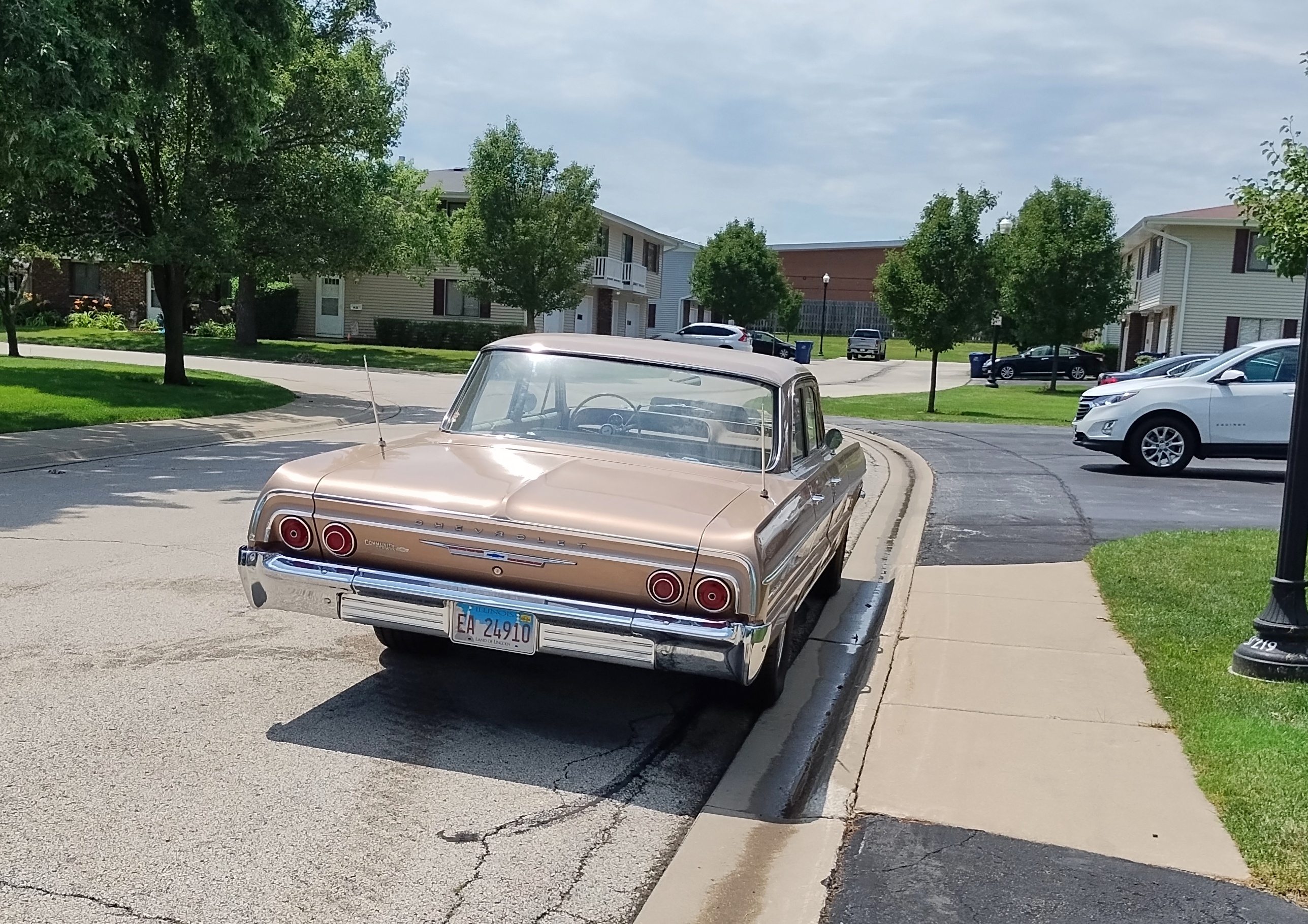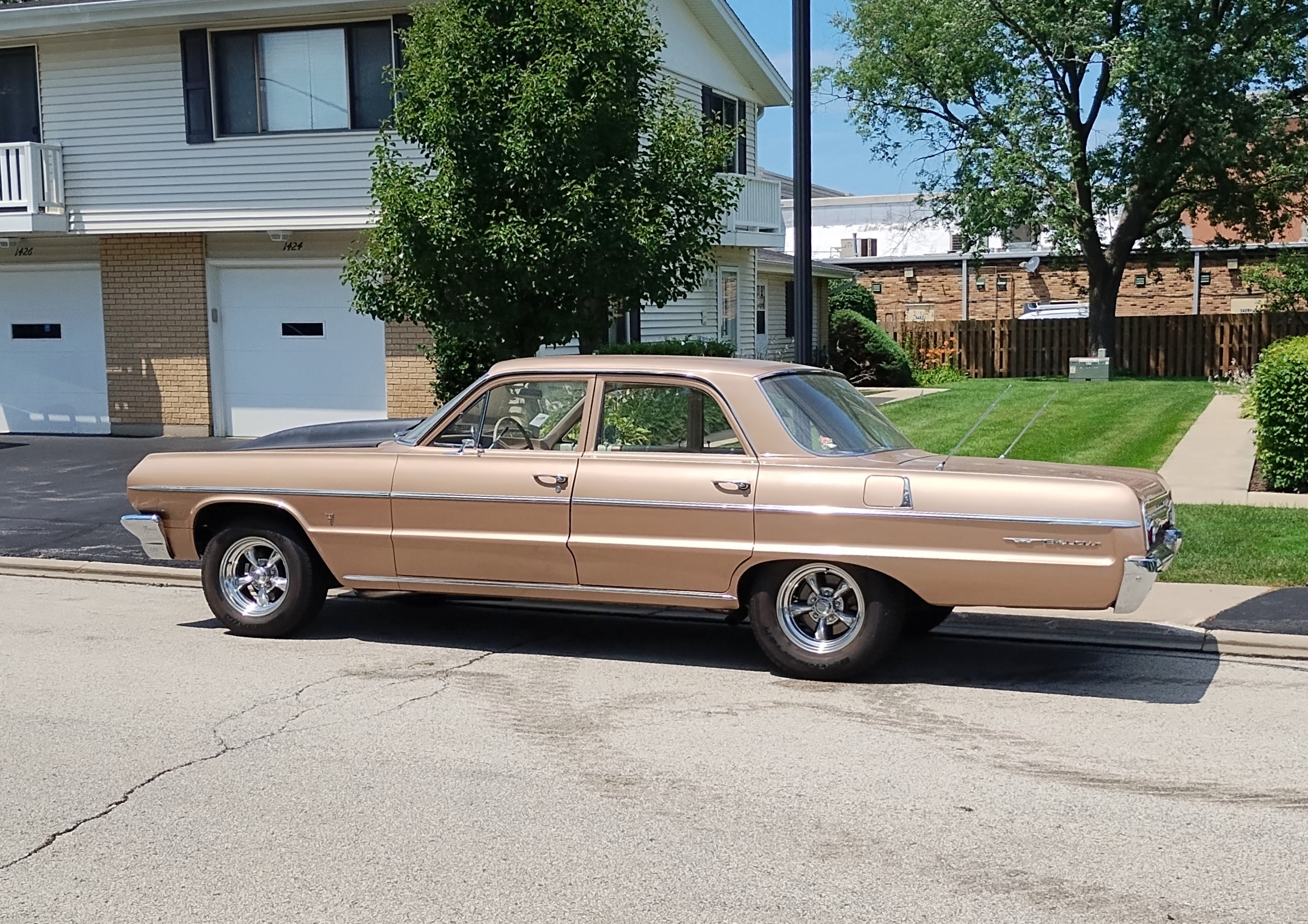What’s that, I thought from far up the street. Possibly a Ford Falcon? Not a model you see much on the streets any more.
I got closer and no, it was a Chevrolet Bel Air. I’m not enough of a car aficionado to pinpoint the model year, but it looks early ’60s to me. Still not something you see much on our 21st-century suburban streets.

My grandmother drove a Ford Falcon. Shorter than the Bel Air, if I remember right, and somewhat rounder. It was the last car she owned, an early or mid-60s model. Again, I’m not enough of an expert to know the exact year, and it isn’t something I would have asked grandma.
I have scattered, but fond memories of riding in that car. It was gray and mostly, I believe, she drove (when I was with her) the short distances to shops she traded at, such as the Handy-Andy grocery store on Broadway in Alamo Heights, or to Brackenridge Park for my amusement.
Oddly enough, besides reminding me of grandma and the Brackenridge Park Eagle, the memory of that old car makes me also think of survivorship bias. There was no seat belt in the back seat, though the the front had lap belts. I usually rode in the back as a kid and, of course, survived the beltless experience. I consider this good fortune.
Some older people – my age, and I’ve seen it in writing – thus come to the conclusion that making children wear seat belts or other safety devices while in a car is merely the heavy hand of a nanny state. Hey, I survived my belt-free childhood in the ’60s! That’s an example of a statement that’s true but also dimwitted. Are there no children (or anyone else) in their graves from that period who would have survived had belts been in use?